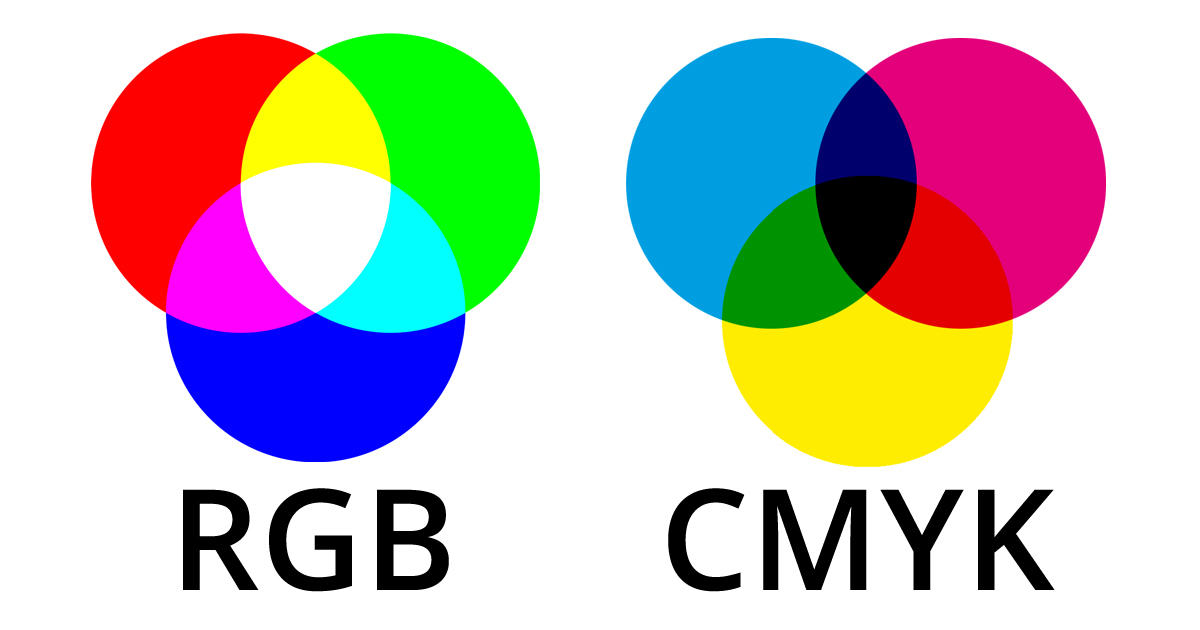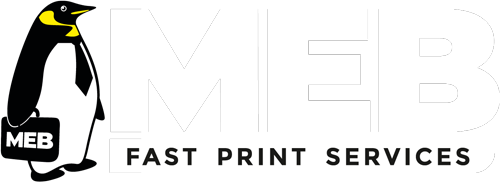We use cookies to make your experience better. To comply with the new e-Privacy directive, we need to ask for your consent to set the cookies. Learn more.

You sent your marketing materials to print, but the printing company answered that the colours of the print will change significantly, because the printer works with different colour settings. According to the printing company, the original file must be converted from RGB to the CMYK colour space, so that the colours print correctly.
So what is CMYK and how do I convert my files to this format? In this blog post, we will tell you what RGB and CMYK are, what the significance of them is with printed products, and how to convert to them with the most common software.
What is RGB?
RGB is an abbreviation of the words "Red", "Green" and "Blue", and means the "colour space" formed by these three main colours of light. Colour space means a spectrum of different colours, which are achieved by combining these three main colours of light in different proportions. The biggest exceptions are the colour white, which is obtained when the value of all three colours is maximum, i.e. 100, and black, which is obtained when the value of all three is zero (0).
RGB is one of the most common colour spaces, as electronic content and screens use this space, including the screen you're reading this blog post on. Each screen is made up of thousands of tiny squares called pixels, each with three lights to represent those three colours.
These lights have intensities between 0-255 and work with the same rules as in creating the RGB color space; everything at maximum creates white, everything at zero creates black, and everything in between creates colours in different proportions of these three colours. In total, 16.7 million colour combinations can be created.
What is CMYK?
CMYK is an abbreviation of ''Cyan'', ''Magenta'', ''Yellow'' and ''Key'' (black, because ''B'' is already reserved for blue), and means the colour space formed by these colours, as already stated with RGB. As an exception to the RGB colour map, white and black are not a combination of RGB values, but on white paper the lack of ink works as white and black has its own ink. Other inks also behave differently, so RGB logic cannot be used with the CMYK colour system.
Unlike the RGB colour map, which creates colours by adding light, the CMYK colour map works by reducing the light absorbed by CMYK inks.
The CMYK colour system is mostly used with printed products. Of these, commercial prints are perhaps the most common, such as logos and texts on clothes, posters, cards, brochures, etc.
Why does colour space matter with printed products?
Printers work exclusively with CMYK inks, so RGB does not fully match with them.
The differences between RGB and CMYK colour spaces are significant, and CMYK is more limited than RGB, so there is a risk that some shades won't print the same as they look on the screen. For this reason, you should think about the purpose of the image, exclusively for digital use or printing, and change the space and colour choices accordingly.
Normally, images on internet platforms are in the sRGB profile, so if you publish online, you'll be fine. If you know you’re printing in top quality with an inkjet printer, you get the best results with the ProPhoto RGB profile. This profile is closer to the human eye than sRGB when it comes to the colour spectrum, and modern devices are able to use this for taking pictures and printing thanks to the wider ink gamut.
Well if we just established that CMYK is recommended with printers, why am I recommending RGB?
The drivers of modern inkjet printers know how to accurately convert ProPhoto RGB colours to a wider than normal CMYK colour gamut, which is with professional printers max. 12. Changing the colour in advance to the CMYK colour space is not a viable option, as it limits the colour spectrum of the file too much.
MEB's inkjet printer uses four (4) other colours in addition to the normal cyan, magenta, yellow, and black, a total of eight (8) colours. The only MEB product where it is possible to use inkjet printing is our decorative poster. Check out the product on its own page!
The CMYK space is ideal for commercial printing and other printed products, as i.e. laser printing is a cheaper option and CMYK covers the printer's normal colour spectrum more than well. Recommended CMYK profiles include, among others, common in Europe ‘’Coated Fogra 39'', common in America ‘‘U.S. Web Coated SWOP v2'' or common in Japan ''TOYO Offset Coated Ver.4.1''
You can download other profiles for yourself and install them on your device. Read this blog post on how to download and install colour profiles on devices with different operating systems: https://www.permajet.com/blog/how-do-i-add-an-icc-profile-to-photoshop/
Program-specific instructions for selecting and changing the colour space
In this section, we list instructions for the most common design programs and services, which are often Adobe products, as the company is rooted as a standard for design work.
Before you start creating files for printing, learn these tips:
- Work on your files as long as possible in RGB format if the file will also be used digitally.
- Save yourself a copy of the project file before changing the colour profile, because when converting RGB to CMYK gamut, you lose some colour data, which cannot be recovered. You may also need to adjust the colours after the conversion to achieve the intended look.
Canva
Canva is one of the most popular graphic design software today and many use the service to design their own materials. One of the reasons is the free use of the service, but one of the most important features of printing is hidden behind a paywall: the CMYK colour space. Canva pro licenses start at €90 per person, but the company also offers license packages for multiple people.
If you have purchased Canva Pro, you export your files in CMYK with following steps:
From the upper right corner Share > Download > File Type > PDF Print > Colour Profile > CMYK
Adobe Photoshop
Photoshop is a popular and highly developed pixel based image editing program for professional use, but many use Photoshop for their own projects.
New project file:
File > New, the selection of the colour space takes place in the New File window in Colour mode.
Converting an already existing file:
Edit > Convert to Profile > Destination Space > (Desired Profile)
In the Convert to Profile window, choose from the bottom Flatten Image to Preserve Appearance, as the colours may otherwise be distorted when several layers have been used in the creation of the file and the transparency may vary.
Adobe Illustrator
Illustrator is a popular software among artists and professional designers. This software works with vector graphics, the quality of which does not change when resizing.
New project file:
File > New, the choice of colour space is hidden under advanced settings, Advanced options > Colour mode.
Converting an already existing file:
Make sure all objects in the file are selected before the next steps.
Edit > Edit Colours > (Desired colour space)
Adobe InDesign
InDesign is a useful software for creating multi-page printed products.
New project file:
In the new file window, the colour map is automatically set according to the selected purpose, for example Web/Mobile sets the file to RGB settings and Print to CMYK mode.
Converting an already existing file:
File > Adobe PDF Presets > [Press Quality] > Export Adobe PDF window opens up, and on the left Output > Destination > (desired colour profile)
Briefly
RGB and CMYK colour spaces work with different logic, and printers used by printing companies mostly use CMYK inks. In most cases, the files to be printed should be in CMYK colour profile. If the file also goes to digital channels, you should work the file in RGB profile as long as possible, save a copy for yourself to preserve the colors, and convert the other one of the files to CMYK format and correct the colours if necessary.
The exception is inkjet printing, which has more colours than the usual cyan, magenta, yellow and black, in which case you should keep the file in the RGB profile, as the CMYK profile is too limiting. The drivers of modern inkjet printers know how to interpret RGB colours accurately.
If the company that manufactures printed products does not mention RGB compatibility, ask separately if it is possible and in which products. At MEB, the RGB profile is recommended only for decorative posters.
If you are interested, MEB's printed products are excellent in quality, and ordering them is easy, affordable and the production is fast. Check out our selection and our file specifications!

 Flyers & Brochures
Flyers & Brochures  Walls & Beach Flags
Walls & Beach Flags  Gifts
Gifts  Packaging
Packaging  Weddings
Weddings  Events
Events  Trade show
Trade show  Offices
Offices